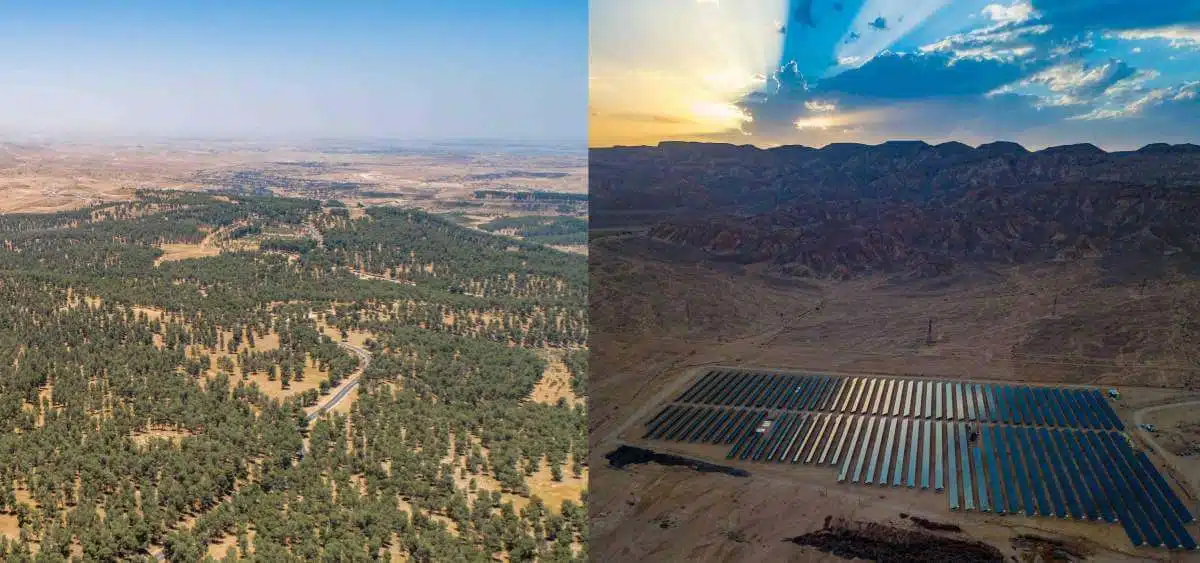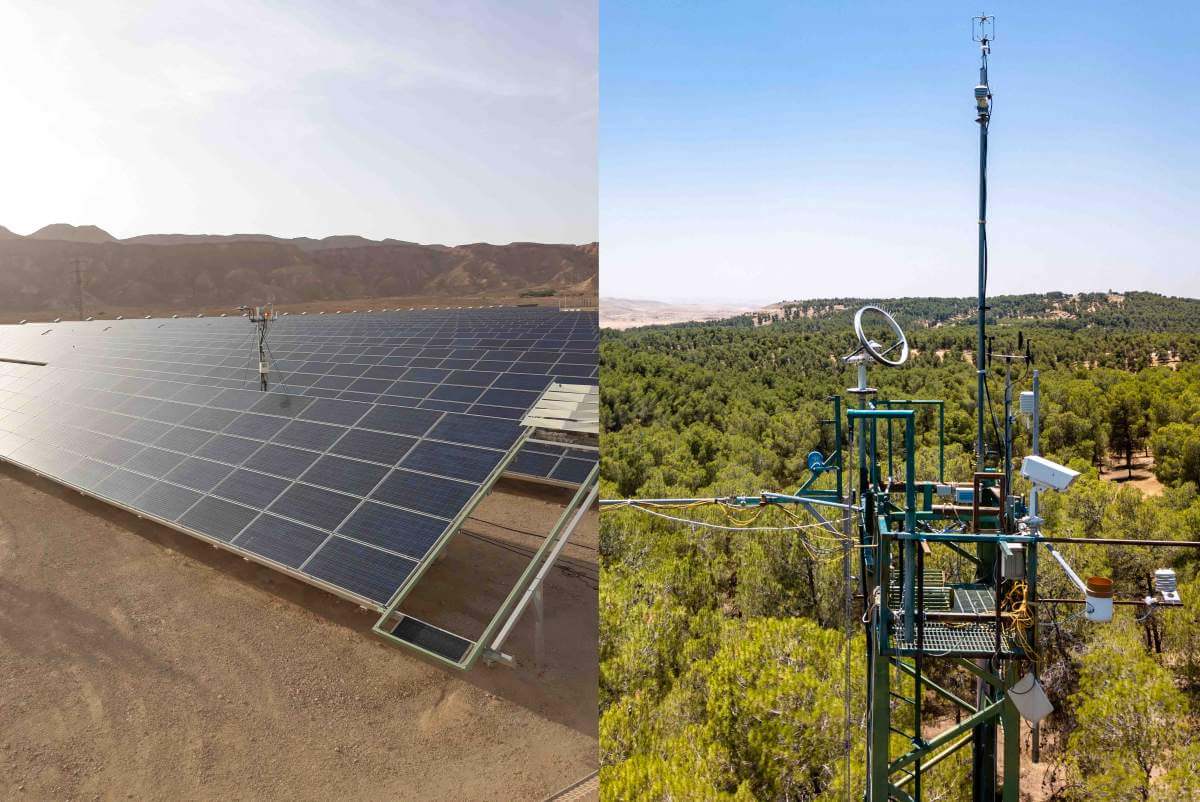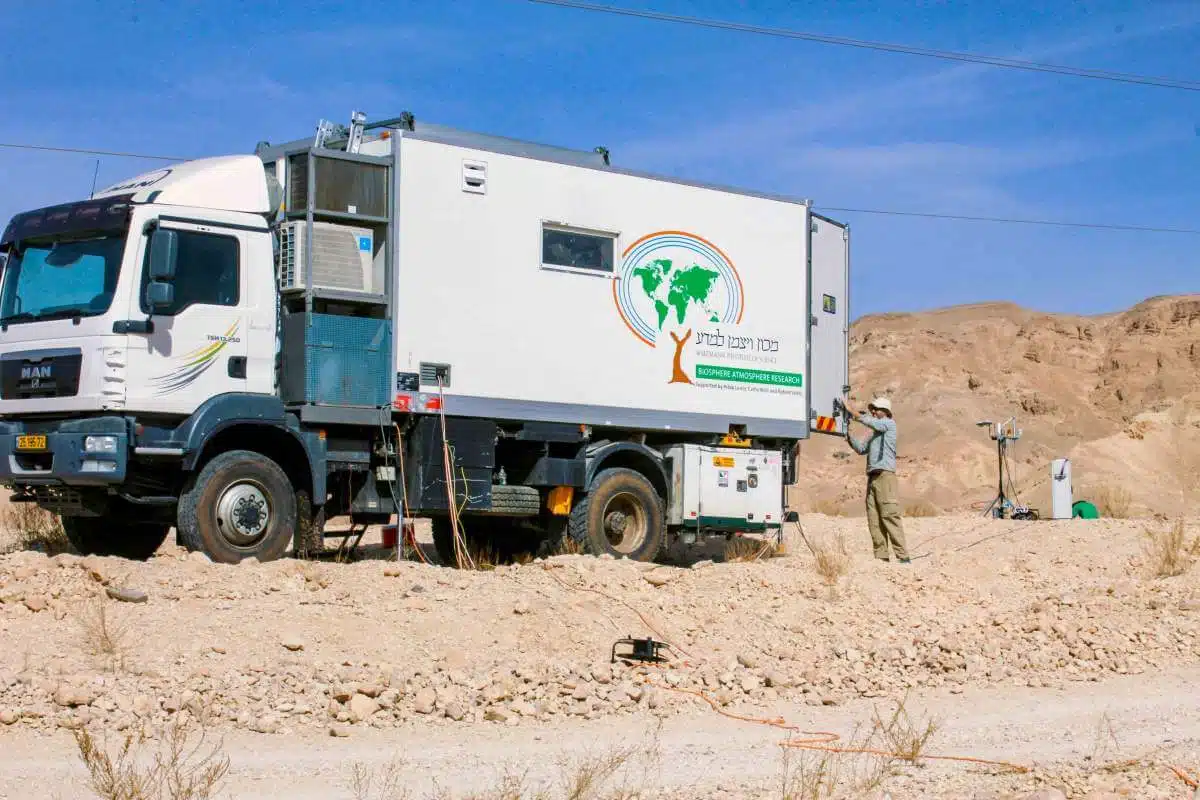Trees or solar panels - which strategy wins in dealing with the climate crisis?

A green forest is one of the clearest symbols of the power of nature - from the abundance of plants and animals that find shelter in the thicket of trunks and branches to its effect on the Earth's climate, among other things due to the process of photosynthesis that fixes carbon dioxide from the air and thus moderates the processes of global warming. The cutting down of tropical deciduous forests is a significant factor in exacerbating the climate crisis, and many environmental initiatives invest in restoring destroyed forests or planting new trees. However, even if we cover the entire surface of the Earth with forests - the powerful photosynthesis power we will create will still not be enough to store all the huge excess amounts of carbon dioxide - the main greenhouse gas in our world - emitted into the atmosphere as a result of human activity in the last 150 years.
Compared to the natural and green forest, another means of dealing with the climate crisis is actually of an artificial nature and a black shade - the establishment of fields of solar panels. Solar power producers obviously have a beneficial effect on the climate balance, as they replace power plants based on fossil fuels, such as coal or gas, thus reducing the harmful emissions of greenhouse gases that accumulate in increasing concentrations in the atmosphere.

But both the natural green forest and the black and artificial "solar forest" have additional effects, and are sometimes problematic from a climatic point of view. Both have a relatively dark hue, which stands out especially in relation to the light desert soil, which reflects a significant part of the sun's radiation into space, and therefore does not add to the heat that accumulates in the atmosphere (in the professional jargon, it is called soil with a "high albedo"). In contrast, the two types of dark forests absorb a larger portion of the sun's radiation (that is, they have a "low albedo") - and as a result, they heat up. Some of this energy is used for photosynthesis in natural forests or to generate electricity in solar forests, but the lion's share returns to the atmosphere as energy flows - and heats it.
"Our research shows unequivocally that in an arid environment, the establishment of solar fields is much more effective in dealing with the climate crisis than planting forests"
If so, from a climatic point of view, what would be the most effective step in relation to a certain unit of land: to plant a forest that is a natural machine for storing carbon dioxide from the atmosphere, or to lay fields of solar panels that reduce carbon emissions into the atmosphere? Many studies have speculated on the topic that employs decision makers all over the world. For the first time, based on findings from arid regions, and on the basis of comprehensive measurements of all the components of the energy flows exchanged between the ground and the atmosphere, this was answered in the research of Dr. Raphael Stern, Dr. Yonatan Muller and Dr. Eyal Rotenberg from the laboratory of Prof. Dear Dan In the Department of Earth and Planetary Sciences at the Weizmann Institute of Science. in research which is published today in the scientific journal PNAS Nexus Medi Amar from the laboratory of Prof. Yakir and Dr. Lior Segev from the Department of Physics Research Infrastructures also participated.
100 years of photosynthesis
In the first step, the researchers compared the effect of a forest, located on the border of the arid climate zone, with that of a solar field located in an arid environment. These areas are characterized by very large amounts of sunlight but a relative paucity of diversity and biomass of plants, so they are particularly suitable for the establishment of large solar fields. In Israel there are such fields in the Arava and the Negev, and there are government initiatives to establish additional fields in Jordan. In the world there are, among other things, huge projects in the deserts of China or plans of the European Union to build solar fields in the Sahara desert. The researchers left the Weizmann Institute in Rehovot for the Arabah in a truck that is a mobile measuring station - a unique development by Prof. Yakir and Dr. Rotenberg. First, they placed the station near a solar field, to measure the energy fluxes exchanged between the ground and the atmosphere, as it would be in an arid environment without solar panels. Later, they placed the mobile station inside the solar field itself, and for that they had to overcome operational and safety challenges that stem from the sensitivity of the panels and prevented similar measurements from being performed in the past. In order to compare the findings with the parallel process that takes place in the forest, they relied on the measurements carried out in the last 20 years by Prof. Yakir and Dr. Rotenberg in the Yatir Forest, which is located in the northern Negev, on the edge of the arid desert - the largest of the KKL-Junk planted forests.
The researchers discovered that the albedo effect of the two "forests" is similar, but the fixation or reduction of carbon emissions is very different - in favor of the solar forest. To complete the comparison, the researchers calculated the equilibrium points, where the opposing effects on the Earth's climate of heating (due to the dark color of both types of forests) and cooling (lowering the concentration of greenhouse gases in the atmosphere as a result of photosynthesis in the natural forest or preventing electricity generation using fossil fuels) are zeroed out. Fossils in the Solar Forest). It turns out that it takes two and a half years for the heat emitted from a solar field to balance against the carbon emissions that are avoided thanks to the electricity it produces; This is also when you take into account the carbon emissions that are created during the production, transportation and operation of the panels. Whereas in the case of a forest of a similar area, it takes more than 100 years of photosynthesis for it to balance its warming effect.
The researchers also wanted to find out how the heating and cooling ratios change in other climates. Using data on similar measurements collected from satellites and databases, they found that in more humid environments, for example in the tropics or in grasslands in areas with a temperate climate (for example in Europe) - the relative warming effect of planting tree forests or establishing solar forests is smaller. This is because the surface of the soil is darker to begin with, so the breakeven point is already reached after about 15 to 18 years. However, they point out, it should be taken into account that in these areas there is less available land for planting new forests.

Dr. Stern and Dr. Muller explain: "Our research shows unequivocally that in an arid environment, the establishment of solar fields is much more effective in dealing with the climate crisis than planting forests. In these environments, deployment of solar fields in much smaller areas than forests (1/100), will offset carbon emissions in the same amount. However, it must be remembered that the forests on Earth absorb close to a third of humanity's total annual carbon emissions, and an important challenge is to preserve this capacity and prevent deforestation on a large scale. Forests are also of great importance to the global rain cycle, to maintaining biodiversity and to many other environmental and social contexts. Therefore, the conclusion that emerges from the research is that the most appropriate solution to deal with the climate crisis is a combination of planting and restoring forests in humid environments and setting up solar fields in arid environments."
More of the topic in Hayadan:
- Are there too many trees in the forest?
- Germany is about to launch the EnMAP hyperspectral satellite that will allow for the first time to estimate the amount of minerals and not just their existence
- And yet... the world is warming
- The largest sunspot ever formed this week
- Scientists are designing a solar cell that captures almost all of the energy of the solar spectrum
